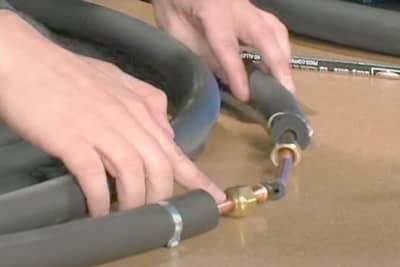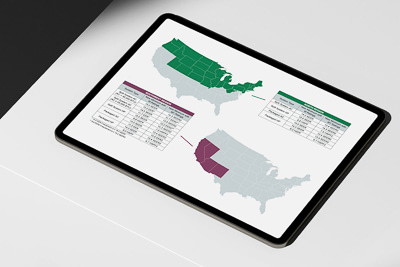Properly Maintaining your AC System Reduces Need for Costly Repairs
Some maintenance steps can be performed by you, the homeowner:
- Air conditioning systems do more than just cool the air: they lower humidity, and also remove dust and dirt by moving the air through filters. The easiest, and often most effective maintenance is to regularly change or clean your air filter, which is located inside the system’s furnace, air handler or attached ductwork. When these filters become clogged with dirt, the system must work harder to do its job. This wastes energy and can make utility bills rise. Depending on the amount of dust in the air, filters can become clogged in just a month or two of operation. Most residential systems have disposable filters. These should be checked every two months (once a month during peak use) and replaced when necessary. Permanent filters should be cleaned in accordance with the manufacturer’s instructions. Under no circumstances should you operate your system without filters. To do so could lead to a need for more frequent cleaning of the heat exchangers.
- Keeping the condensing unit free of debris and blockage is vital to maintaining proper airflow and reducing system wear. Cut trees and bushes back around the unit if necessary. Do not set lawn clippings or other items on or near the condensing unit.
- Look for any obvious changes from the prior year, such as dents, oils or odors.
| Each year, it is recommended that an air conditioning professional inspect and clean your equipment. Springtime is often the best time for this. | |
| Maintenance | Potential Problems Without Maintenance |
| Check for proper refrigerant (Freon) levels. A low level indicates a leak, to be found and repaired before adding more Freon. | Low levels of refrigerant indicate a leak which is both an environmental and operational hazard. Compressor failure and many other system problems result from low or no Freon. |
| Check all electrical components and controls. Controls may include contactors, relays, circuit boards, capacitors, sump heat and other accessories. All control box and electrical parts should be checked for wear or damage. | Faulty electrical components can prevent your system from operating or cause it to run improperly. |
| Inspect evaporator coil, condensate drain pan and tubing. Clean as needed. | Evaporator coils attract dirt, mold and other contaminates. A dirty coil can be unhealthy and operationally unsound. If fins are not cleaned and combed straight, airflow into unit can be blocked causing pressure build-up and unit shut-down. |
| Inspect fan motor and fan blades for wear and damage – on older models lubricate as needed. | Fan blades could be bent causing unit to vibrate make excess noise or result in the motor overheating. If fan motor is dirty, it may run roughly or overheat. |
| Inspect compressor. | Unusual sounds or short cycling may indicate future difficulties with the compressor. |
| Inspect line sets and insulation. | Leaks in line set can cause system pressures to drop leading to improper cooling. Lack of insulation can cause condensation on line set or cause line set to freeze which can also alter system pressures. |
| Inspect and clean blower assembly (includes blower housing, blower wheel and motor) in furnace or air handler. | The blower and motor bearings must be kept clean and lubricated to keep the motor from overheating and to keep noise and vibration to a minimum. . |
| Calibrate thermostat. | Your thermostat setting could be misreading the temperature in your home and causing your air conditioning to run unnecessarily. For every degree your thermostat cools your home below the desired temperature, energy bills rise by an average of 8 percent. |
| Check filter, located in furnace, air handler or attached ductwork. | When filters become clogged with dirt, the system must work harder to do its job. This wastes energy and can make utility bills rise. It also can prevent proper removal of dirt and particles from the air, an important function of system to keep your environment healthy. |
Recharging refrigerant is not necessary, unless you have a leak in the system.
Contrary to popular belief, air conditioners do not consume refrigerant, like a car consumes oil. Under ideal conditions, you will never need to add or change the refrigerant in your air conditioning system. If you do find that your refrigerant levels are low, this indicates a leak in your system which should be repaired before you add refrigerant. While most new system connections are welded to minimize leaks, many older units (8 years or older) were connected with mechanical flared fittings which can vibrate loose over the years, causing leaks.
Refrigerant leaks are a problem because:
- Low refrigerant levels reduce efficiency of the air conditioner.
- They can freeze the evaporator coil, causing it to ice up.
- Freon (R-22) is an Environmental Protection Agency (EPA) controlled substance, deemed hazardous if released into the environment.
- The heart of the unit is the compressor, which is cooled by refrigerant. Over time, low refrigerant levels can cause overheating and premature failure of the compressor, often requiring complete replacement of the compressor or the entire condensing unit – a very expensive proposition.


